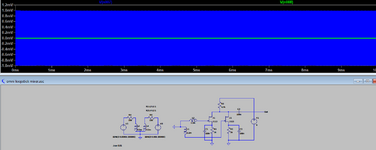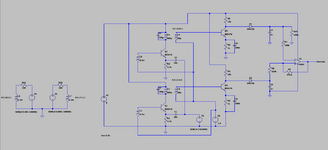dr pepper
Advanced Member level 1
I want to prototype an omnidirectional magnetic loopstick ant.
I cannot find much data on the web, maybe I'm not using the right search strings.
Anyway what is a good way to do this, my initial idea is to buffer 2 loopsticks orientated at 90 degrees with 2 fets, then mix the o/p of the fets using 2 windings on a 4 winding balun the third winding of which feeds the rx, the last winding on the balun for tuning connected up to a variable cap.
Or is there a easier idea.
EDIT: Ok I threw this together,
2 fets add the 2 loopstick signals, with a little gain, in order to get the 'signal' into the loopsticks I made them into transformers with the circuit on the left providing excitation, varying the amplitudes of the sources to crudely change the transmitter direction, seems to work.
In real life there might be some weird cancellation issues.
I cannot find much data on the web, maybe I'm not using the right search strings.
Anyway what is a good way to do this, my initial idea is to buffer 2 loopsticks orientated at 90 degrees with 2 fets, then mix the o/p of the fets using 2 windings on a 4 winding balun the third winding of which feeds the rx, the last winding on the balun for tuning connected up to a variable cap.
Or is there a easier idea.
EDIT: Ok I threw this together,
2 fets add the 2 loopstick signals, with a little gain, in order to get the 'signal' into the loopsticks I made them into transformers with the circuit on the left providing excitation, varying the amplitudes of the sources to crudely change the transmitter direction, seems to work.
In real life there might be some weird cancellation issues.
Attachments
Last edited:

